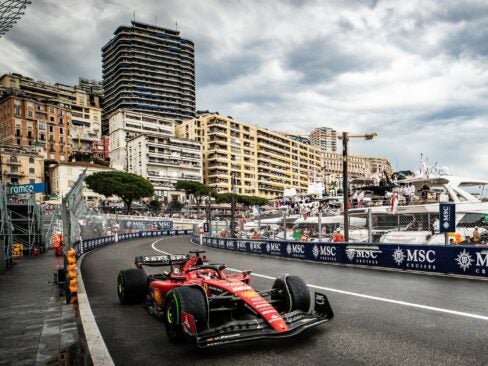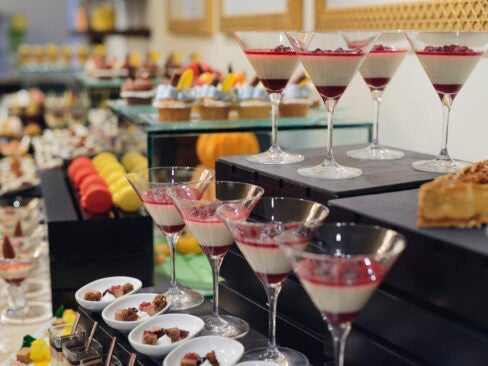By Andy Hayler
Michelin and other guides classify restaurants, but our personal views may not always match this official view. Sometimes highly rated establishments can disappoint us, but there are few more satisfying feelings than when there is an unexpected pleasant surprise, where the food greatly exceeds your expectations. Perhaps the restaurant has been overlooked or harshly treated by the guides for some reason, perhaps it is yet to be fully recognized. Here are some Asian restaurants that impressed me.
Aronia de Takazawa – Japan
Recently Tokyo restaurant Aronia de Takawzawa greatly expanded its seating capacity: it went from two tables to five. This fact will give you an idea that the cooking here is not exactly mass catering. Yoshiaki Takazawa prepares an elaborate tasting menu for his guests, the intricacy shown in a ratatouille of fifteen different vegetables served as a miniature terrine on a spoon.
This being Japan, ingredient quality is impeccable, shown in a stunning vegetable parfait with gazpacho, crisp black cabbage and a hint of Parmesan. Japanese beef is cooked over charcoal with poached egg marinated in red wine – a gloriously rich dish. This modern Japanese cooking exploits modern techniques but does not lose sight of classical skills.
Ginza Okamoto – Japan
This little kaiseki restaurant is a 2012 venture from Hidetsugu Okamoto, previously head chef at a three star Michelin Tokyo restaurant called Yukimura. Kaiseki cooking aims to showcase the finest ingredients at their absolute seasonal peak, illustrated here by superb white asparagus with prawn, rape blossom and a comforting prawn and egg sauce. Tempura of bamboo shoots and greenling fish show the skill of the chef, with an airily light batter and a sweetened vinegar sauce with just a hint of red chilli.
Innovation is illustrated by the use of a mountain pepper flower called sansho cooked in a rich stock with dashi and onion; into this is dipped very thin slices of Kanagawa pork. The pepper flower provides a distinctive spicy kick with a slight citrus hint, like a gentler version of its relative, the Szechuan pepper. The cooking here retains the classical skills of kaiseki dining whilst bringing in interesting new touches. It is a restaurant to watch.
Kadowaki – Japan
The Roppongi restaurant has a traditional discreet entrance, lit by a lantern, serving refined kaiseki cuisine to just a few diners. Toshiya Kadowaki spurns attention, initially declining the Michelin stars he was awarded. Instead he focuses on his highly seasonal cuisine, with a few modern touches to bring kaiseki dining bang up to date.
A warm shrimp dish with chilli has superbly sweet and tender shrimps, the hint of chilli lifting the dish. A comforting broth of spring mountain vegetables with hot pepper had pleasing warmth, and the precision of cooking here is seen in a simple but superb dish of rice cooked with a generous shaving of Italian black truffles. This is understated but top class cooking.
Liberty Private Works – Hong Kong
Canadian chef Mokoto Ono moved Liberty Private Works to its current central Hong Kong location in 2011. It is reminiscent of a Tokyo restaurant, with guests sitting around a counter, and a no-choice tasting menu. A dish of tuna, sea urchin and espelette (French chilli pepper) with a crab roll on a bed of puffed rice shows skillful balance of flavors and textures.
The precision of the cooking here is illustrated by loin and belly pork with cauliflower, rhubarb and Macadamia nuts, mustard greens and carrot. The crackling here is firm but not too hard, the rhubarb provides welcome acidic balance to the fattiness of the pork, the mustard greens giving a nice hint of spice. This is classy fusion cuisine.
Ryugin – Hong Kong
On the 101st floor of the ICC building, Hong Kong’s tallest structure, is Ryugin, the sister restaurant to the three-Michelin-starred Ryugin in Japan. Head chef Hideaki Sato worked for years in the Tokyo original, and has brought the same exacting standards to Hong Kong. Many ingredients come directly from Japan, such as superb sea urchin from Hokkaido served with tempura of scallop with aubergine in a ginger broth. Abalone with octopus with apple jelly and aubergine demonstrate that neither ingredient need be rubbery: here both are stunningly tender.
The technical skill of the kitchen is shown by candied Japanese peach, frozen in liquid nitrogen to minus 196 degrees; as the peach sphere is cut open, warmed peach is poured over the frozen, giving a contrast of texture and temperature. Service is impeccable. Ryugin seems to me the exemplar of modern Japanese cooking.
Sushizen – Japan
This sushi restaurant in the outskirts of Sapporo originally opened in 1971. Hokkaido is where much of Japan’s highest quality seafood comes from, mostly shipped down to Tsukiji market in Tokyo, but here you can taste it at its source. The sheer quality of the fish is hard to explain if you are used to eating sushi in London or New York. Sea urchin from Hokkaido is particularly famous and the sea urchin at Sushizen has wonderful rich flavour, the best I have eaten. Even humble deep fried corn was remarkable, the corn beautifully sweet, topped with a mild green chilli pepper.
Hairy crab, a noted specialty of Hokkaido, has beautiful sweet flavour. Hokkaido shrimp here re-defines fresh, as it is still alive when served on the sushi rice. Sushizen is without doubt one of the finest sushi restaurants in the world.
Waku Ghin – Singapore
This is the first venture outside of Australia for chef Wakuda Tetsuya, whose eponymous Sydney establishment has a global reputation. Set in the vast Marina Sands casino complex, Waku Ghin is a haven of tranquility away from the slot machines. The room is split up into individual teppan rooms, where you sit on bar stools while a chef prepares food in front of you on a steel hotplate. Marinated Japanese shrimp comes with sea urchin and osetra caviar, presented in a hollowed out sea urchin shell – a pretty dish showcasing fine ingredients.
Precise cooking is shown in a dish of Alaskan king crab steamed under a copper pan in front of you, served with lemon-scented extra virgin olive oil. This is a dish with nowhere to hide and the cooking technique is faultless, the crab sweet, the lemon adding just the right hint of acidity. Waku Ghin is a world class Japanese restaurant.
















